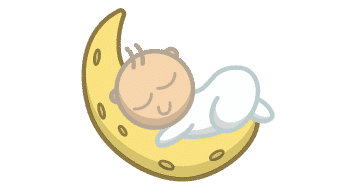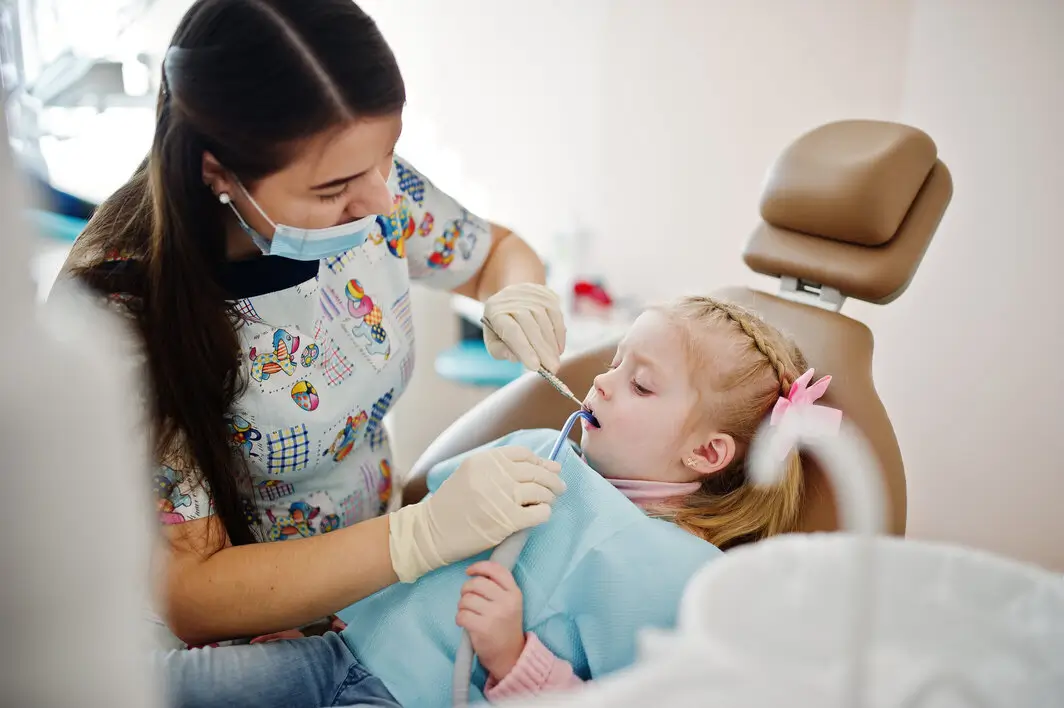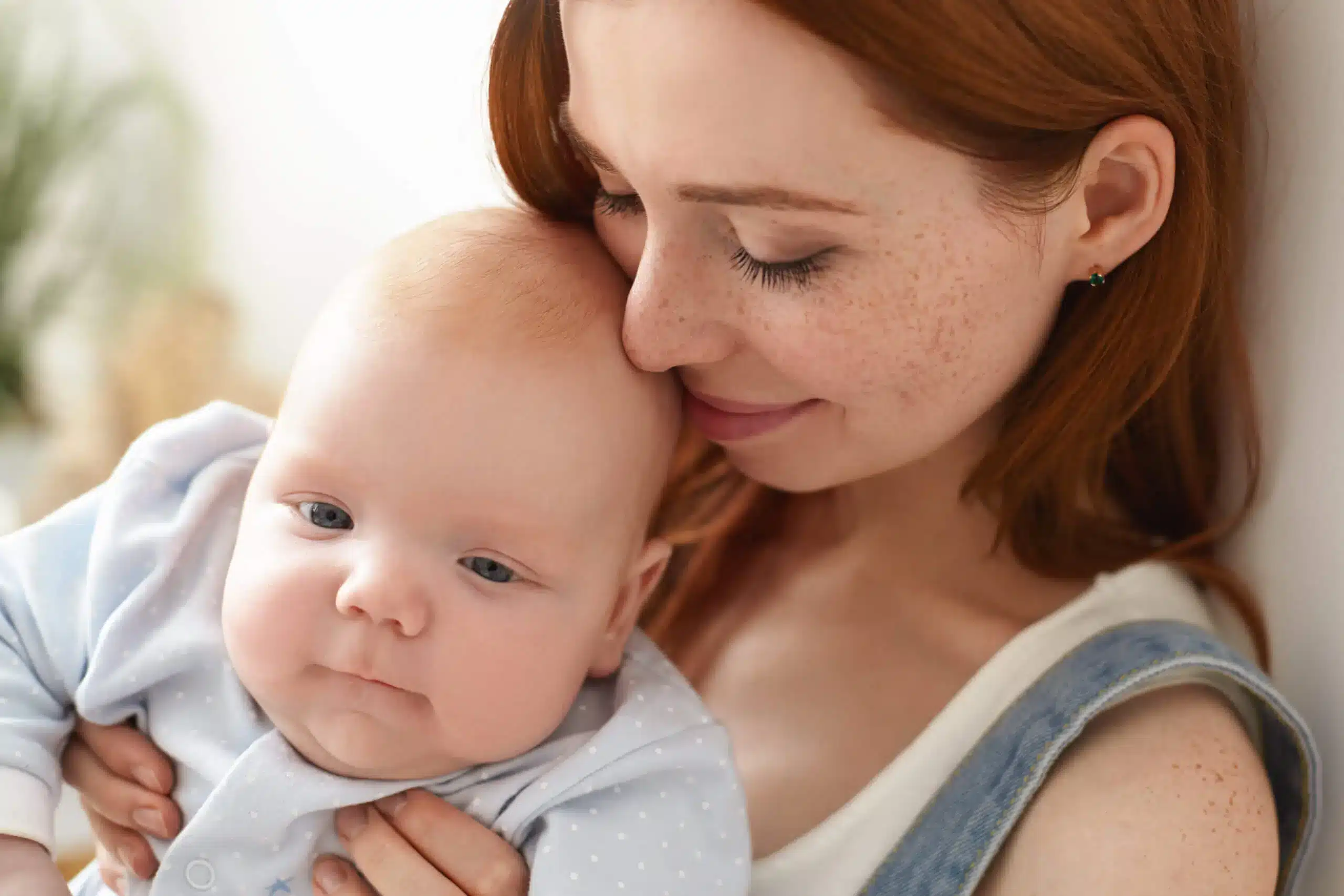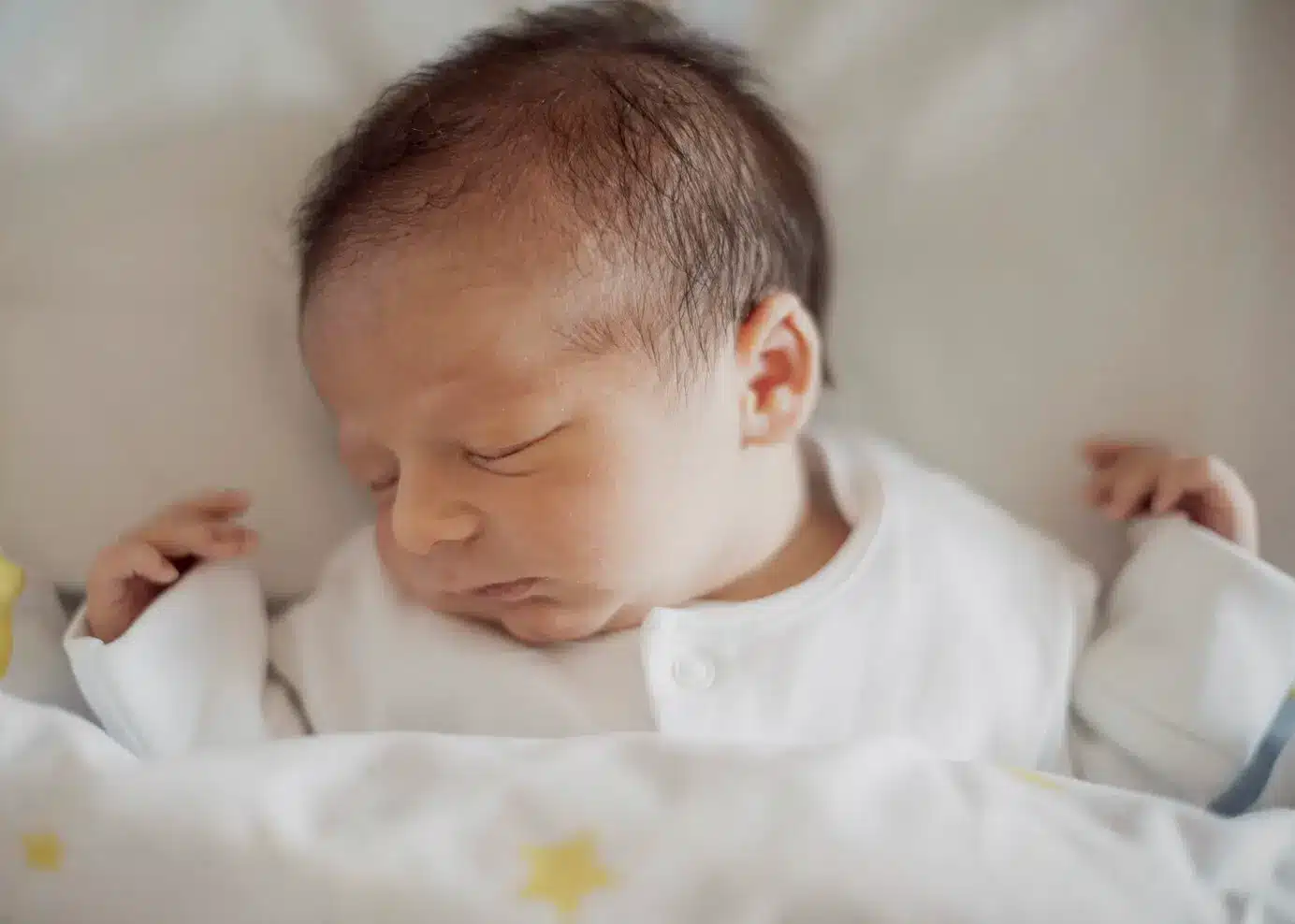Cleaning baby gums starts oral care early, protects future teeth, and builds a routine that sticks. A soft cloth, clean water, and two calm minutes can shift mouth bacteria in the right direction. Gentle daily care keeps milk sugars from lingering and sets the stage for easy brushing later. With cleaning baby gums, small, repeatable steps outperform complicated gadgets every time.
Why Cleaning Baby Gums Matters
Cleaning baby gums works before teeth erupt because bacteria and sugars never take holidays. Early wiping clears film along the ridges, lowers cavity risk for incoming enamel, and makes the mouth routine feel normal. Clinic education often recommends gum care from day one, then a smooth switch to brushing as teeth break through. With cleaning the gums in place, the change to a brush becomes simple rather than stressful.
Bacteria, milk sugars, and future teeth
Fermentable sugars from milk and formula can linger on the ridges and cheeks. Regular cleaning child gums shifts that balance. Less residue means fewer cavity-friendly conditions when teeth arrive. Family dental guidance consistently underlines early wiping with a soft, damp cloth and a move to a tiny smear of fluoride once enamel is present. This steady habit supports cleaning newborn gums during the entire pre-tooth window.
How newborn gum care protects enamel buds
Newborn gum care keeps biofilm low around the future eruption sites. Consistent routines also make later baby teeth brushing easier: familiar steps, calm touch, predictable timing. The habit of cleaning baby gums twice daily helps incoming enamel face a cleaner environment from the start.
What to Use for Cleaning Baby Gums
Cleaning child gums needs only a few basics: soft cotton cloth or silicone finger brush, clean water, and clean hands. Fluoride toothpaste enters when the first tooth erupts just a rice-grain smear based on common pediatric guidance. This setup keeps cleaning newborn gums simple at home and easy to copy during travel.
Cloth, silicone, water, and fluoride guidance
A damp cloth wraps a finger and reaches the gum line well. A silicone finger brush offers grip and texture for cleaning infant gums. Once enamel shows, a soft baby brush with a rice-grain smear of fluoride is standard. Overfilling paste invites swallowing; conservative amounts keep care safe.
Products to skip; is honey bad for teeth
Sweeteners have no place on gums or pacifiers. Is honey bad for teeth? Yes sugar exposure feeds cavity bacteria, and honey is unsafe for infants for other medical reasons as well. Plain water and clean tools pair best with cleaning infant gums.
Step-by-Step Guide to Cleaning Newborn Gums
Cleaning baby gums thrives on short, predictable steps. Two minutes, twice daily, is a clear goal once a rhythm forms.
How to clean newborn gums after feeds
How to clean newborn gums starts with clean hands. Wrap a damp cloth around a finger. Open the lips gently and sweep along the upper and lower ridges, cheeks, and under the tongue. Repeat passes until the cloth shows minimal residue. This is cleaning newborn gums in its simplest form: wipe, rinse cloth, wipe again. The same motion supports cleaning infant gums through the first months.
How to clean infant mouth morning and night
How to clean an infant mouth in the morning: a gentle sweep after the first feed. Evening: the longer clean, after the last feed, before bed. Regular cleaning baby gums at these two touchpoints reduces sugar film overnight and steadies the routine. These moments also prepare the switch to baby teeth brushing once edges appear.
Adding brushing infant tongue safely
Brushing infant tongue helps reduce milk coating and morning breath. Use the cloth or silicone brush to sweep forward, avoiding a deep push. Pair tongue care with brushing newborn gums as eruption nears. With teeth emerging, the same motion supports how to brush newborn gums and early how to brush baby’s teeth.
Tips for cleaning baby gums daily routine
Keep the setup simple
Warm water, soft cloth or silicone finger brush, clean hands. Plain water pairs best with cleaning newborn gums.
Create a calm rhythm
Use a short cue or soft tune. Gentle pressure only soft contact beats scrubbing for cleaning gums.
On-the-go care
A small travel kit supports how to clean an infant’s mouth away from home: spare clothes, finger brush, and a small water bottle. Daycare handoff: include a spare cloth and a clear note to keep newborn gum care consistent.
Add smart extras, skip sugar
Light brushing infant tongue helps with milk coating. As soon as enamel shows, fold in how to brush newborn gums and progress to baby teeth brushing without dropping the wipe. Is honey bad for teeth and remains a firm yes to keep sweets off pacifiers and gums.
Quick checklist
- Warm water for comfort during cleaning newborn gums
- Gentle, steady strokes for cleaning infant gums
- Cue routine to reduce fussing during cleaning gums
- Brush circles plus wipe = smooth transition to how to brush baby’s teeth
From Gums to Teeth: The Smooth Transition
Cleaning baby gums turns into brushing with minimal changes. The routine stays, the tool shifts, and confidence grows.
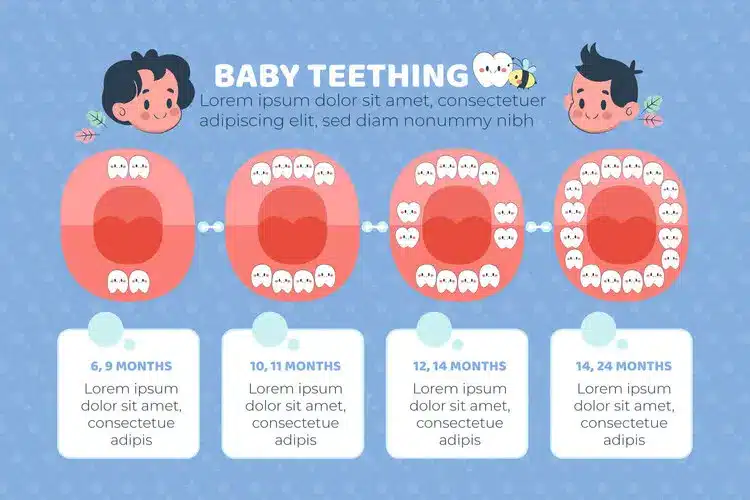
How to brush newborn gums as teeth appear
How to brush newborn gums during eruption means adding the soft brush for any visible enamel while still wiping the ridges. A rice-grain smear of fluoride paste once daily matches standard guidance. Gradually move to twice daily as more teeth arrive. The act of cleaning baby gums doesn’t stop; it blends with early baby teeth brushing.
How to brush baby’s teeth and early baby teeth brushing
How to brush baby’s teeth: angle bristles toward the gum line, small circles, front and back. Short sessions win. Early baby teeth brushing focuses on routine over perfection. A clean finish at bedtime matters most for cavity prevention and complements cleaning gums already in place.
Normal baby gums and new born with teeth
Normal baby gums look pink, moist, and smooth. Slight white lines before eruption are common. A new born with teeth (natal teeth) appears rarely; clinical input decides if removal or smoothing is needed. Until then, cleaning around the area stays gentle and saliva-friendly, with careful passes similar to cleaning newborn gums.
Baby Teeth Development
Timeline and eruption order
Cleaning baby gums supports enamel long before teeth appear. Under the ridges, tooth buds mature, then erupt in pairs: lower central incisors first, then uppers, laterals, first molars, canines, and second molars. Ranges vary; a 10 month old has no teeth can still be within normal limits while the same cleaning newborn gums plan continues.
Why early wiping matters for enamel
Daily cleaning infant gums lower bacteria along ridges, cheeks, and tongue. Less sugar film creates a friendlier scene for first enamel and smoother transitions to baby teeth brushing once edges show.
From wipes to a brush step by step
As the eruption begins, how to clean newborn gums blends into how to brush baby’s teeth with a rice-grain smear of fluoride. Short circles along the gum line lift soft plaque, while the cloth still handles smooth ridges. Brushing newborn gums starts gently around new edges to keep them clear.
Gum health checkpoints
Healthy children’s gums look pink and firm. Normal baby gums show no persistent swelling or shiny red patches. A calm wipe after sweet liquids helps settle irritation and supports steady routines.
Tongue care during teething
Light brushing infant tongue reduces milk coating and morning breath. Pair tongue sweeps with early brushing newborn gums as soon as the first edges appear so the full mouth stays fresh while new teeth arrive.
Why routines matter later
Early habits reduce risks linked to bottles or sweet drinks, helping prevent 2 year old cavities in front teeth and setting up success for cleaning toddler teeth through 7 year old’s teeth.
Choosing a brush for baby teeth brushing
Start phase with cleaning newborn gums
Before eruption, cleaning newborn gums works best with a soft cloth or silicone finger brush. This keeps ridges clear and prepares the mouth for the next step without adding harsh texture to children’s gums.
First tooth arrival and cleaning baby gums
Once the first edge shows, cleaning infant gums blends with how to brush baby’s teeth. A soft baby brush with a tiny head and soft bristles supports gentle circles along the gum line. A rice-grain smear of fluoride pairs well with early baby teeth brushing.
Size and shape guide for normal baby gums
- Small brush head that reaches back corners without stretching normal baby gums
- Soft bristles only; stiff fibers can irritate children’s gums
- Easy-grip handle that fits an adult hand guiding how to brush newborn gums
- Simple design without sharp edges to protect cleaning infant gums
Finger brush or bristle brush
Silicone finger brushes suit the transition from wipes to bristles and help with brushing newborn gums. As more enamel appears, a soft-bristle baby brush handles plaque better while the cloth still supports how to clean an infant mouth.
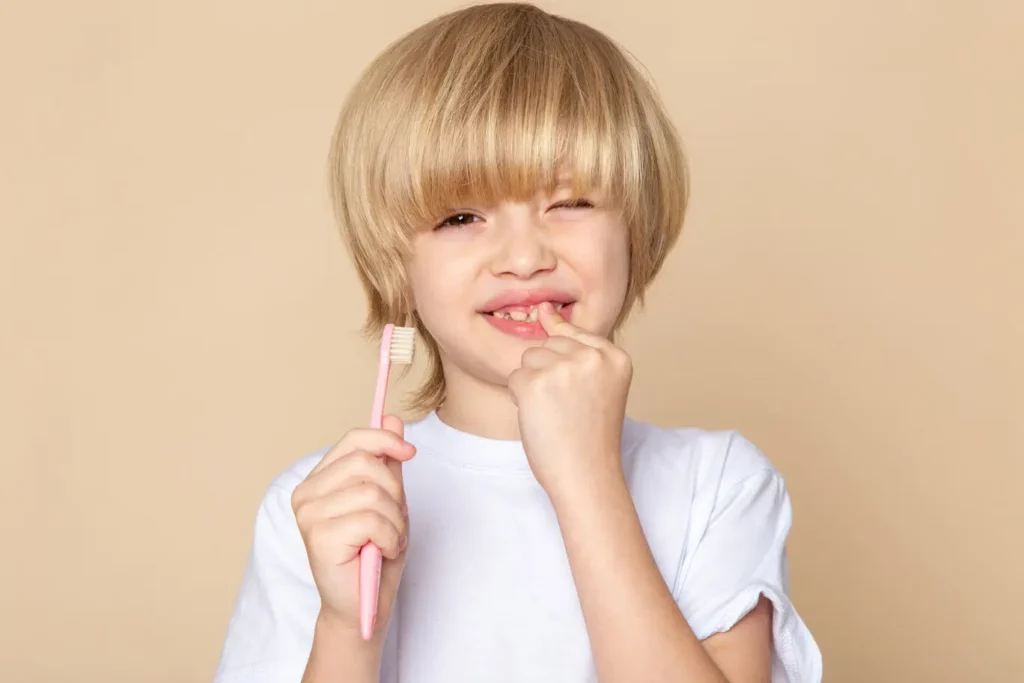
Replacement and hygiene routine
- Replace the brush every three months or sooner if bristles splay
- Rinse and air-dry upright after baby teeth brushing
- Keep a spare in the travel kit used for cleaning newborn gums
- Avoid sharing brushes to protect children’s gums
Tongue and soft-tissue support
Add light brushing infant tongue sweeps when milk coating lingers. Keep pressure low so cleaning infant gums stays comfortable.
Special Cases and Age Notes
Cleaning baby gums adapts to different timelines and questions that surface along the way.
10 month old has no teeth
A 10 month old has no teeth and can still have a perfect routine. Daily cleaning newborn gums continues until eruption. Teething varies widely; the care steps stay the same, and cleaning baby gums keeps the mouth comfortable.
Cleaning toddler teeth and 2 year old cavities front teeth
Cleaning toddler teeth builds on the same routine with a pea-size smear of fluoride paste when spitting is reliable. Short strokes and a mirror step make it a game. “2 year old cavities front teeth” often link to bottle or sippy exposure to sugary liquids; front surfaces need special attention, and night milk should not linger on enamel. Wiping and cleaning gums before bed, then brushing, protects those vulnerable areas.
7 year old’s teeth and growing independence
7 year old’s teeth usually include mixed dentition. Independence increases, but a quick adult check (visual plaque, missed zones) helps. Handing off more steps works best when cleaning baby gums earlier in life already built a calm, consistent routine.
Safety Notes and Gentle Humor
Cleaning child gums runs on clean tools and patience. No harsh scrubs, no sugary dips, no sharp edges. If fussing starts, pause and switch to a light cheek massage; a calm reset beats a wrestling match. Mouth care should feel like routine, not a performance. With cleaning baby gums anchored twice daily, every stage ahead runs smoother.
FAQs
How often should cleaning baby gums happen each day
Ans: Twice daily works well morning and bedtime plus a quick wipe after sweet liquids.
Is honey bad for teeth for babies
Ans: Yes. Fermentable sugar fuels bacteria and does not belong on pacifiers or gums. Cleaning baby gums uses water only.
What tools are best for cleaning infant gums on trips
Ans: Cloth, silicone finger brush, and a small bottle of water. A compact kit keeps cleaning newborn gums on track.
When do children’s gums need a checkup
Ans: Anytime swelling, bleeding, or sore spots last more than a day. Routine visits support baby teeth brushing skills as teeth erupt.
Does brushing infant tongue matter
Ans: Yes. Light sweeps help reduce milk coating and odors. Pair with brushing newborn gums during eruption to support cleaning baby gums.
How to brush baby’s teeth once enamel shows
Ans: Use a soft baby brush, tiny fluoride smear, and small circles along the gum line. Consistency keeps cleaning newborn gums moving into confident brushing.
Are whitening pastes okay for children’s gums
Ans: No. Gentle fluoride pastes fit the job; whitening formulas are abrasive for young enamel.
Do pacifiers or bottles cause 2 year old cavities front teeth
Ans: Extended exposure to sugary liquids can increase risk. Wiping and cleaning baby gums, plus timely cleaning toddler teeth, reduce residue on enamel.
What if a newborn with teeth shows up on day one
Ans: Natal teeth are uncommon. A clinician decides whether smoothing or removal is needed. Until then, gentle cleaning of baby gums around the area continues.
What do normal baby gums look like
Ans: Normal baby gums appear pink and smooth, without shiny red patches or persistent swelling. Cleaning baby gums helps keep that healthy look.
How to clean infant mouth if teething pain starts
Ans: Cool water on the cloth and slower passes. Keep cleaning newborn gums brief but consistent.
How to brush newborn gums around first molars
Ans: Angle bristles onto the gum line and use tiny circles. Cleaning baby gums on non-erupted areas remains the same.
Conclusion
Cleaning Child gums turns mouth care into a calm, repeatable part of the day. Early wiping reduces residue, welcomes enamel safely, and leads straight into baby teeth brushing with minimal fuss. With steady routines, cleaning newborn gums becomes the simplest habit in the house and healthy smiles get a strong start.
This quiet routine also builds cooperation. Familiar tools, gentle pressure, and short sessions signal what happens next, so first teeth meet a cleaner mouth and fewer surprises.
